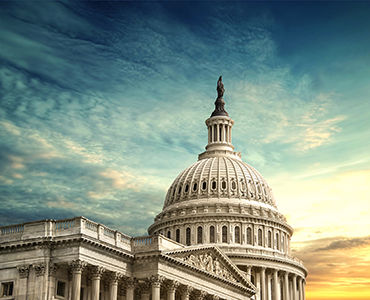Businesses have opportunities to increase cash flows and lower tax liabilities in light of the recent cut to the federal interest rate to best prepare themselves against uncertainties around political control in Washington and the fate of certain business tax provisions.
That is what Matt Talcoff, partner and leader of RSM U.S.’s Washington National Tax practice, explained in an interview with Checkpoint. Opportunities available to businesses after an interest rate cut, he continued, include 1) borrowing more; 2) expanding business; 3) buying equipment; 4) increasing hiring; and 5) capturing merger and acquisition transactions.
Those considering business expansion, for example, may benefit from accelerating purchases of capital equipment, Talcoff suggested. “If you do that … are you going to get more tax depreciation in the next couple of years because you borrowed more to spend it on capital improvements? You need to factor that in to manage your after-tax cash flow.”
Businesses must also wear their political pundit hats and model different scenarios regarding election outcomes, especially for the November 8 General Election. Who succeeds outgoing Democratic President Joe Biden and which parties end up with majority control of each chamber will impact the potential for tax policy changes.
The last two major tax reform packages — the 2017 Tax Cuts and Jobs Act (TCJA, P.L. 115-97) and the Inflation Reduction Act of 2022 (P.L. 117-169) — were both passed under full party control. Republicans controlled the House, Senate, and White House when the TCJA was enacted, and the Democrats had narrow majorities in the House and Senate when President Biden first took office up until January 2023 after the Republicans took the House in the middertms.
A tie-breaking vote by Vice President Kamala Harris in the Senate was needed to push the Inflation Reduction Act over the goal line in the Senate, as were concessions to appease two centrist holdouts.
As proven in the two years following the enactment of the Inflation Reduction Act, a mixed-party Congress like the current Congress is unlikely to easily deliver a tax bill to the president’s desk, especially when a decisive election is around the corner. A recent cautionary tale is the Senate’s failure to advance a bipartisan tax proposal that easily cleared the House. The bill was the product of a compromise agreement between Senate Finance Committee Chair Ron Wyden (D-OR) and House Ways and Means Committee Chair Jason Smith (R-MO). It touched on various aspects of the TCJA and other tax programs temporarily put in place in response to the COVID-19 pandemic.
The takeaway for business taxpayers, Talcoff concluded, is if a split Congress can’t pass a bill that had overwhelming bipartisan support and popularity in the other chamber, perhaps it will continue to not do so outside of a single-party sweep. Either way, as he believes, businesses cannot afford to ignore political realities when it comes to the future of the Tax Code.
“We’ve heard what candidates have said about their perspective on future tax rates or continuation — or non-continuation — of the [TCJA],” said Talcoff. “And so all those things … need to be factored in. If you just block it out and you just borrow money and you spend it, you could be costing yourself a lot of money in the future on tax dollars, which is a big part of your profit and loss, right? But if you don’t even look at it, then you’re not doing it justice to think about the future implications on cash flow.”
Although the majority of business tax provisions in the TCJA were permanent, unlike individual provisions, Congress may revisit corporate tax policies as part of the next big reform bill — namely the corporate tax rate, which the TCJA lowered from 35% to 21%. Other business tax items in the TCJA were the Code Sec. 199A deduction for qualified pass-through income; bonus depreciation rates that started at 100% and will phase out by 20% each year annually until 2026; and the Code Sec. 163(j) cap on the deduction for business interest expenses.
But arguably the least popular corporate tax provision in the TCJA that has the broadest calls for repeal is the removal of the options for businesses to immediately expense research and development (R&D) costs under Code Sec. 174. These expenses are now required to be capitalized or amortized over a period of five years.
Talcoff said there “is definitely a community that wants to go back to immediate expensing.” The five-year requirement “means you’re slowing down deductions, you’re paying more tax, you have less money to reinvest into R&D. And it’s circular, right? And some businesses decide to take R&D offshore because of that. I’m sure it’s all over the place.”
Another issue the next Congress could address is the change taking depreciation and amortization out of the calculation for the Section 163(j) deduction, leaving only earnings before interest and taxes, or EBIT, as opposed to EBITDA (depreciation and amortization). Candidates could score easy points with those in the business community by publicly supporting restoring the “DA,” but in the meantime, taxpayers should rely on their modeling and forecasting.
For instance, Talcoff gave the example of a business that believes the Section 199A deduction will expire as currently set to under the existing law. The taxpayer expects flow-through entities to pay more in federal tax, so the plan then becomes to increase taxable income.
“So you could do it by, obviously, performing better,” Talcoff explained, “but there are also methods in accounting and tax purposes that you could use to potentially increase your taxable income, which would also give you the ability to use more of your interest expense. But again, it’s your crystal ball … and that’s where the modeling comes in.”
Get all the latest tax, accounting, audit, and corporate finance news with Checkpoint Edge. Sign up for a free 7-day trial today.


